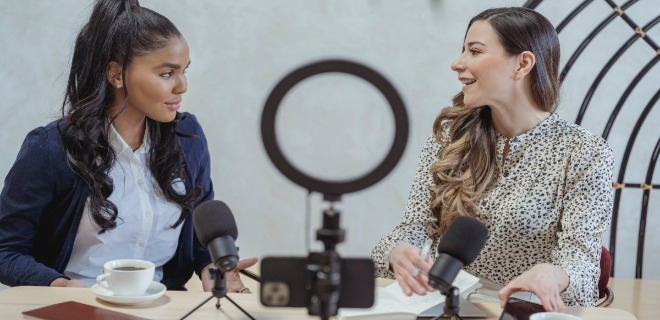
Digital audio advertising has evolved from a niche space into a booming marketplace. And yet, it remains an underutilized channel for marketers, ripe with opportunities to reach engaged audiences in an almost unlimited range of environments.
The advantages of audio are clear: Audiences are expanding, as is the volume of content and convenient avenues to buy inventory at scale. Consumers have shifted dramatically toward streaming audio platforms, and podcasts and audiobooks are essential to the current cultural landscape.
We’re seeing a generational shift in media habits, as younger audiences are particularly eager to embrace digital audio. Like in CTV, the proliferation of platform options makes ad-supported offerings highly appealing versus paying for more subscriptions.
Despite the advances we’ve seen in ensuring brand safety in the space, a recent study showed more than 70% of advertisers believed brand risk here would increase as more ad inventory enters the market. Early adopters note industry efforts in ensuring brand suitability, transparency, and fraud prevention. As digital audio matures, stakeholders proactively address risks, making it a vital choice for brands and campaigns. In reality, today, digital audio should be an obvious, even essential, buy for a wide variety of brands and campaigns.
Advertisers Navigate the Unknown and Unexpected
To leading advertisers, the scale and reach of audio have long been enticing, inspiring them to advocate for the measures they need to take advantage of its value. In 2022, 223 million people, or 74% of all internet users in the US, said they listened to digital audio. And more than half of US marketers now say they plan to increase investment in digital audio.
Digital audio advertising spend reached $4.9 billion in the US in 2020, a 58% year-on-year increase. Spotify, Pandora, YouTube Music, and other high-profile platforms have developed ad-supported products. Now, prominent DPSs like Yahoo and The Trade Desk have launched media-buying capabilities for digital audio. This has opened access to more programmatically-bought inventory, scaling audio ad buying and luring top brands like H&M and Nike. At this rate, late-adapter brands will soon find themselves playing catch-up in the marketplace.
Digital audio content can be unpredictable in terms of subjects, tone, and availability. Podcast content is variable by nature. Some popular recording artists and record labels have stated their preference for one specific platform or another. However, marketers have come to acknowledge this variability and have worked with streaming audio platforms to work with and around their media quality concerns.
There have also been significant improvements in ad fraud prevention. Fraud can be an issue in emerging channels, but marketers that recently addressed challenges in CTV have already applied the lessons they’ve learned to audio. Ad tech companies have jumped into the fray. For example, DoubleVerify recently uncovered the fraud scheme BeatString, helping to prevent fraudsters from continuing to steal ad budgets.
Long-needed Clarity Is on the Rise in Audio – If You Know Where and How to Look
The potential for reach and engagement in digital audio is too great for marketers to fear any minor brand safety pitfalls and ad fraud in perpetuity. The vital work of building trust among stakeholders throughout the audio space is well underway. As advertisers demand greater transparency and clarity over their digital audio ad investments, the industry has taken steps to address media and inventory quality challenges.
For example, audio leaders Triton and Spotify collaborate with top third-party verification providers like DoubleVerify and IAS to quickly identify brand safety issues and sophisticated invalid traffic sources or botnets. Industry leaders also advocate for more transparency around metrics and measurement for advertisers, brands, and agencies. As is always the case in digital, brands build trust based on independent auditing. These measures have led to more data-sharing between audio platforms and their advertising partners.
We’re also seeing industry bodies step in to advise and work toward new standards – a welcome move that can embolden advertisers to spend. Last summer, the Interactive Advertising Bureau (IAB) released its Digital Audio Measurement Guide to support investment in the space and help build more sophisticated data-driven digital audio strategies. These responsible actions are accelerating solutions to ensure advertisers can take advantage of the growing opportunity in audio.
Advertisers Can Make a Meaningful Push Together
In terms of content and audience, digital audio is an exciting space that hasn’t even reached critical mass. Brand safety, fraud prevention, and overall ad tech functions are rising to the occasion and becoming just as nuanced and tailored to advertisers’ needs as in other highly desirable media channels.
Increased trust enables creators and platforms to monetize their content and for advertisers to unlock the full potential of digital audio. The industry is moving toward its goals of overcoming any lingering media quality roadblocks as they arise. And we’ll be able to overcome them by continuing to push for transparency, verification, and accountability.